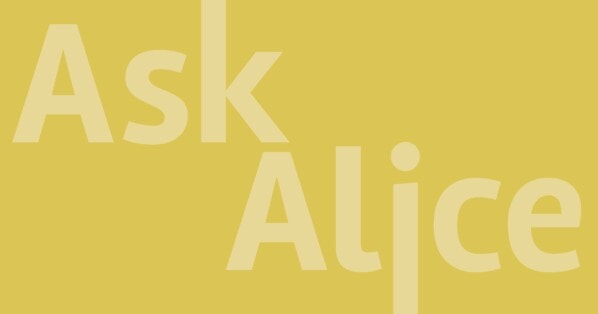Janet Shibley Hyde, Ph.D., professor of psychology and chair of the department of gender and women’s studies at the University of Wisconsin–Madison, has conducted extensive research on gender difference, particularly in math performance. Her meta-analysis and data-driven work has dispelled long-held stereotypes that women and people of color do not have the aptitude to perform well and succeed in math and math-related professions.
In 1990, Dr. Hyde and colleagues Elizabeth Fennema, Ph.D., and Susan J. Lamon, Ph.D., published a cutting-edge work in the Psychological Bulletin based on data compiled from 100 studies of math performance. The data collected on more than 3 million participants during a 25-year period (1963–1988) found no large or small overall differences between boys and girls in math performance. Slight differences occurred in problem-solving as these students reached middle and high school, largely because boys tended to take math and science courses that emphasized this skill.
“We conclude that gender differences in mathematics performance are small,” Dr. Hyde writes. “Nonetheless, the lower performance of women in problem-solving that is evident in high school requires attention.”
While Dr. Hyde’s research and subsequent studies on gender and math performance have disrupted the idea of brilliance as being innate and an exclusively male attribute, women and people of color remain underrepresented in the STEM fields. Why this disparity persists has become the focus of research in recent years.
The highs and lows of brilliance
Research published in 2019 in Frontiers in Psychology by Anne Deiglmayr, Ph.D.; Elsbeth Stern, Ph.D.; and Renarte Schubert, Ph.D., from Germany and Switzerland, states a “wide-spread stereotype that influences women’s paths into STEM (or non-STEM) fields is the implicit association of science and mathematics with ‘male’ and with requiring high levels of male-associated ‘brilliance.’ Recent research on such ‘field-specific ability beliefs’ shows that a high emphasis on brilliance (raw talent) as a requirement for success goes along with a low share of female students among its graduates of a specific field.”
“One thing that turns people off from math is the suite of stereotypes tightly attached to mathematicians; there is this really strong narrative of what a mathematician is like, and if you are very distinct from that image, then it is easy to feel like you either won’t be any good at math or you won’t enjoy spending your career doing math and being surrounded by mathematicians.”
– Lisa Piccirillo, Ph.D., assistant professor, mathematics, Massachusetts Institute of Technology
The report continues, stating a “possible mediating mechanism between cultural expectations and stereotypes on the one hand, and women’s underrepresentation in math-intensive STEM fields on the other hand, is that women may be more likely than men to feel that they do not belong in these fields.”
This concept — belonging uncertainty, or a person’s perception that “people like me do not belong here” — is often reported by persons from underrepresented groups against whom negative stereotypes exist, such as women in math-intensive STEM fields or Black and Latino university students. According to their report, these feelings of belonging uncertainty often surface when students have difficulty in their studies, or experience failure and negative stereotypes and are more likely to give up their courses of study.
While the German and Swiss research team encourages more studies in field-specific ability beliefs and belonging uncertainty, their results are in line with earlier research conducted in the United States, which led them to put forward that “even among young women who have chosen to study a STEM subject, biases linking science to ‘brilliance’ are prevalent and can partly explain their higher belonging uncertainty in their fields.”
Other studies and surveys by researchers, psychologists, and mathematicians from Carnegie Mellon University, The University of Chicago, University of Rochester, and Macalester College suggest the gap may be attributed more to nurture than nature. In other words, success in math and math-intensive fields may have more to do with parents and teachers encouraging girls to consider careers that involve math. Other studies point toward gender identity bias and stereotypes, cultural barriers, workplace discrimination, and the lack of women serving on academic journal editorial boards, rather than cognitive abilities as obstacles to women’s pursuing STEM professions.
Encouragement breeds success
If anyone has dispelled the idea that girls cannot do math, it is Lisa Piccirillo, Ph.D. Not only can she do math, but she also loves it. “I study math because I love it. There is plenty of math that I don’t like enough to have chosen to study or make a career in. I really just love my specific discipline, which is called topology.”
Dr. Piccirillo’s mathematics journey was peppered with encouragement and support — from her parents to university professors and mentors. While an undergraduate at Boston College, she took a calculus course taught by a female professor. She did well in the course and was encouraged to take more math classes. Eventually, Dr. Piccirillo decided to major in math. She completed her undergraduate degree in mathematics and enrolled in The University of Texas at Austin, known for its exemplary graduate program in mathematics and its reputation for supporting female math students. It also ranks eighth in the country in topology, the field she wanted to pursue.
Although Dr. Piccirillo encountered some skepticism while at UT Austin, overall she says she felt welcomed as a woman mathematician. The idea that one has to be a genius or a math prodigy or even brilliant did not necessarily apply to her; rather, a love of the subject and dedication to study, along with robust mentoring, aided in her success. Dr. Piccirillo earned a Ph.D. in 2019 and was a National Science Foundation postdoctoral fellow at Brandeis University.
While at UT Austin, Dr. Piccirillo attended a lecture on low-dimensional topology and geometry, where she learned about the Conway knot. The knot is named after the late English scholar and mathematician John Horton Conway, Ph.D., who made significant contributions to mathematics. He died leaving behind a question that had confounded seasoned mathematicians and topologists for 50 years: whether the Conway knot is a slice of a higher dimension.
“I was motivated to think about [the Conway knot problem] because it was so absurd that it was unknown,” Dr. Piccirillo recalled. “In general, for a small knot like that, mathematicians are quite good at determining sliceness. I just thought the Conway knot shouldn’t really be so much harder than any other.”
She solved the problem less than a week after the lecture, using techniques from her work and from her dissertation, which examines knots and four-dimensional spaces. Her solution to the Conway knot drew widespread accolades, including publication of her findings in the Annals of Mathematics and a tenure-track position at the Massachusetts Institute of Technology, where she recently began as an assistant professor.
Dr. Piccirillo has joined an academic institution that has acknowledged women are underrepresented in STEM fields, particularly math, and hopes to develop a more inclusive and supportive working and learning environment. She plans to join that effort, doing whatever she can to lessen the belief in brilliance as a prerequisite for success in math and STEM professions.
“Since people from many socioeconomic groups who are underrepresented in math are often socialized to have ‘nonmathematician’ values and behaviors, you can see how many folks — women and girls very much included — can easily feel like mathematics is really not the career for them.”
– Lisa Piccirillo, Ph.D., assistant professor, mathematics, Massachusetts Institute of Technology
Change the narrative
“The first thing I should say is that this is a really complicated issue, and I’m not at all qualified to diagnose the systematic failures or propose solutions,” Dr. Piccirillo said. “One thing that turns people off from math is the suite of stereotypes tightly attached to mathematicians; there is this really strong narrative of what a mathematician is like, and if you are very distinct from that image, then it is easy to feel like you either won’t be any good at math or you won’t enjoy spending your career doing math and being surrounded by mathematicians.
“It’s really off-putting if you don’t see anyone who looks like you or has your background enjoying and succeeding at math,” she said. “It is also really ostracizing if you’re just temperamentally distinct from the stereotypical mathematician; [that is] you make decisions based on feelings rather than logic, or if you’re motivated by social interaction.
“And since people from many socioeconomic groups who are underrepresented in math are often socialized to have ‘nonmathematician’ values and behaviors, you can see how many folks — women and girls very much included — can easily feel like mathematics is really not the career for them,” she said.
One way to address this is to reframe the math myth or, as Dr. Piccirillo explained, “changing this narrative about who can enjoy math and who can do great math is really important. It’s important that the community of mathematicians include more diverse people and make our diversity — socioeconomic and temperamental — highly visible.” The effort should also include the media, teachers, and society at large to broaden their narratives about mathematicians, she said.
A final word on brilliance
So, is math brilliance and genius really a thing? Dr. Piccirillo concurs with the research: No, as her lived experience demonstrates.
“People who do beautiful math work hard and grapple with a lot of ideas; sometimes they manage to put some of the ideas together in a new way, which results in striking or ‘brilliant’ work.
“Overall, I think people should think of striking math as a product of a masterful, attentive, strenuous process, just like you would think of striking carpentry being an artifact of a difficult, masterful process. Striking math absolutely does not come from the math gods bestowing an ‘aha moment’ or some innate geniusness. Anyone can learn the process, develop a deep knowledge of the tools, work hard, and produce beautiful theorems.”
Dr. Piccirillo also believes it is never too late to study math. She decided on a career in topology in university. She encourages girls and young women to avoid the tendency to compare themselves with their peers.
“Learning math is primarily about you learning math, wherever you are and whatever pace you have space for. Make career choices that put you in environments that feel good for you.”
Sources:
Hyde, J.S., E. Fennema, and S. Lamon (1990). Gender Differences in Mathematics Performance: A Meta-analysis. Psychological Bulletin 107(2): 139–155.
Deiglmayr, A., E. Stern, and R. Schubert (2019). Beliefs in “Brilliance” and Belonging Uncertainty in Male and Female STEM Students. Frontiers in Psychology 10: 1114.







